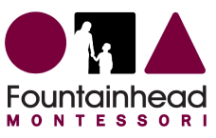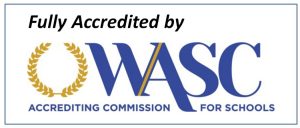In today's rapidly changing world, the ability to think creatively and critically is more valuable than ever. These skills—once considered "soft" or secondary to academic knowledge—are now recognized as essential for success in the 21st century. At Fountainhead Montessori School, we don't just acknowledge the importance of creativity and critical thinking—our entire educational approach is designed to nurture these capabilities from the earliest years.
Beyond Rote Learning: The Montessori Difference
Traditional educational approaches often emphasize memorization and repetition, with children learning to provide expected answers to predetermined questions. While these methods may produce strong test results in the short term, they fail to develop the innovative thinking and problem-solving abilities children need for long-term success.
Montessori education takes a fundamentally different approach. Rather than treating children as empty vessels to be filled with information, the Montessori method recognizes them as active learners with innate creative potential. The entire Montessori environment is designed to foster independent thinking, creative exploration, and analytical reasoning.
The Foundation: Freedom Within Limits
Creativity requires freedom—the space to explore ideas, experiment with possibilities, and develop original solutions. The Montessori principle of "freedom within limits" provides exactly this balance, offering children autonomy within a carefully structured environment.
In a Montessori classroom, children:
- Choose their own activities based on their interests
- Work at their own pace without artificial time constraints
- Explore materials in novel ways (within safety and respect boundaries)
- Pursue questions that spark their curiosity
- Express their understanding through multiple modalities
This freedom fosters intrinsic motivation and allows children's natural creativity to flourish. Unlike educational approaches where teachers dictate every activity, Montessori education trusts children's innate drive to learn and create.
Montessori Materials: Open-Ended Tools for Thinking
While Montessori materials are often praised for their beauty and order, their most important quality may be their open-ended nature. Unlike toys or educational products with predetermined uses and outcomes, Montessori materials invite exploration and discovery.
For example, the sensorial materials—like the pink tower or color tablets—can be used in countless ways beyond their initial presentation. A child might arrange color tablets in a rainbow pattern, create a symmetric design, or sort them based on their own classification system. Each of these approaches demonstrates creative thinking.
The Power of Hands-On Learning
Creativity and critical thinking develop most effectively through concrete experiences. Montessori's emphasis on hands-on, experiential learning provides the sensory input and physical engagement that build neural connections and support higher-order thinking.
When children work with Montessori materials, they're not passively receiving information—they're actively constructing understanding. This process requires them to:
- Make predictions
- Test hypotheses
- Recognize patterns
- Draw connections
- Analyze results
- Refine their approach
These are precisely the skills that form the foundation of both creative innovation and critical analysis. By engaging in this type of learning from an early age, Montessori children develop thinking patterns that serve them throughout their lives.
The Mixed-Age Classroom: A Laboratory for Innovative Thinking
The traditional Montessori classroom spans a three-year age range, creating a dynamic environment where children learn from each other and develop complex social-cognitive skills. This setting naturally fosters creative and critical thinking in several ways:
- Younger children observe diverse approaches to problem-solving demonstrated by older peers
- Older children reinforce and clarify their own understanding by explaining concepts to younger classmates
- Children encounter varied perspectives and solutions to the same challenge
- Collaborative projects allow children to combine ideas and build on each other's thinking
Unlike same-age classrooms where conformity often becomes the norm, the Montessori mixed-age environment celebrates diverse thinking styles and multiple approaches to learning.
The Error-Friendly Environment
Critical thinking develops when children learn to recognize, analyze, and correct their own mistakes. Montessori materials are designed with built-in "control of error" features that allow children to see when something isn't working without teacher intervention.
For example, if a child building the pink tower places a larger cube on top of a smaller one, the tower becomes visibly unstable. This immediate, non-judgmental feedback encourages the child to reconsider their approach and try a different solution.
This error-friendly environment teaches children that mistakes are valuable learning opportunities rather than failures to be ashamed of. They develop the analytical skills to recognize when something isn't working, the creative thinking to generate alternative approaches, and the perseverance to keep trying until they succeed.
By choosing Fountainhead Montessori School for your child, you'll nurture the creative and critical thinking capabilities they'll need to thrive in an increasingly complex and rapidly changing world.












Let us know what you think about this post
Put your Comment Below: